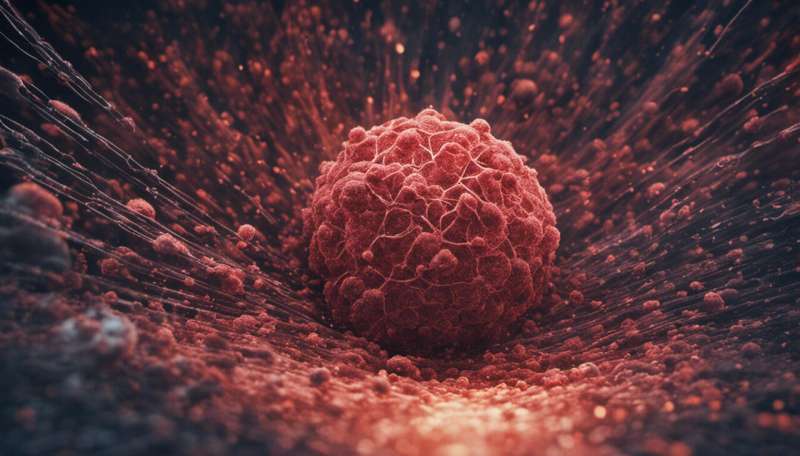Nanoparticles and the immune system

(Phys.org)—Nanotechnology is such a new innovation that no one is really sure what will come of it. Predictions range from the ability to reproduce things like diamonds and food, to the world being devoured by self-replicating nanorobots.
Until recently, nature was the only "manufacturer" of molecular matter. In the last few years however, nanotechnology has entered the public consciousness, bringing together different areas of science. The technology is expected to lead to innovations that can help address many of the problems facing today's society.
Nanotechnology-based products are already on the market place, including electronic components, scratch-free paint, sports equipment, wrinkle- and stain-resistant fabrics and sun creams. Analysts estimate that the market for such products is now worth hundreds of billions of euros and could rise to one trillion by 2015.
This also means however that potential occupational and public exposure to manufactured nanoparticles could increase dramatically in the near future. Many researchers have already addressed toxicity issues associated with different nanoparticles in vitro and in vivo. However, information describing the relative health and environmental risk of engineered nanoparticles is still lacking. The effects of nanoparticle properties on the immune system are still being explored, and studies of many nanoparticle preparations generally fall into two categories: (a) responses to nanoparticles that are specifically modified to stimulate the immune system and (b) undesirable side-effects of nanoparticles.
The InLiveTox project, which has been funded by the EU over the past three years, has significantly advanced the capability of in vitro testing of nanoparticles. The project focused on the impact of nanoparticle exposure on the gut, cardiovascular system and liver. Exposure via ingestion is particularly relevant due to the inclusion of nanoparticles in food, food packaging and oral medicines.
The project developed a novel modular fluidics-based in vitro test system and demonstrated its use to model the response of selected tissues to the ingestion of nanoparticles. The results from the in vitro system were validated by an in vivo study of nanoparticles biokinetics and toxicity by ingestion in rats. Tissues from these animals were used to investigate toxicological responses, again focusing on the gut, cardiovascular system and liver. This data was then compared with other biokinetic studies using similar particles, but other routes of exposure (e.g. respiratory route). Comparison of the data was obtained in vivo on exposure by injection and ingestion with data obtained from standard (static, single cell type) assays. The developed system showed a remarkable pattern of differences and similarities, particularly when studying inflammation. There were clear differences in the physiological relevance of the different approaches.
This means that the results of the InLiveTox project could have the potential to change the way that pharmaceutical, chemical, cosmetic and food sectors test the safety and efficiency of new materials. The improved methods could deliver significant economic benefits both through reduction of testing costs compared to the use of animals, but also through the opportunity of bringing safer products to market faster than existing methods while complying with the REACH legislation.
The technology developed in this project could provide a significant competitive advantage to early adopters. It can be used as a testing and research tool in toxicology and pharmacology for any new chemical entity. In many ways the results of the project went beyond expectations, delivering an exciting and innovative technology that has the potential to underpin new product developments in the field of in vitro testing. On a macro level, the project confirms the internationally competitive position that Europe's research organisations hold in the fast developing field of in vitro testing.
More information: InLiveTox project www.inlivetox.eu/
Provided by CORDIS
















